Related Research Articles

Ntozake Shange was an American playwright and poet. As a Black feminist, she addressed issues relating to race and Black power in much of her work. She is best known for her Obie Award-winning play, for colored girls who have considered suicide / when the rainbow is enuf (1975). She also penned novels including Sassafrass, Cypress & Indigo (1982), Liliane (1994), and Betsey Brown (1985), about an African-American girl run away from home.

Kimberly Elise Trammel is an American actress. She made her feature-film debut in Set It Off (1996), and later received critical acclaim for her performance in Beloved (1998).
Ambersunshower ) is an American R&B singer and former member of the hip hop duo, Groove Garden.

for colored girls who have considered suicide / when the rainbow is enuf is a 1976 work by Ntozake Shange. It consists of a series of poetic monologues to be accompanied by dance movements and music, a form which Shange coined the word choreopoem to describe. It tells the stories of seven women who have suffered oppression in a racist and sexist society.
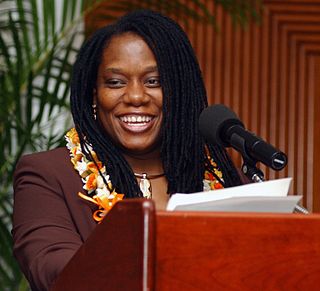
Tracy Price-Thompson is an American speaker, novelist, editor, and retired United States Army Engineer Officer. She is a decorated veteran of the Gulf War.

Mem Nahadr, also known as M. Nahadr and simply "M", is an American performance artist and multi-octave vocalist having access to the whistle register and best known for the performance of the song "Butterfly", composed by Yoko Kanno and lyricized by Chris Mosdell for Cowboy Bebop. In the recording studio, Nahadr writes, records, performs, and produces all of each project's music. She is co-produced by Grammy Award Winner, James P. Nichols. She is also an author, composer, poet, filmmaker, and human rights activist.
Alta Gerrey was a British-American poet, prose writer, and publisher, best known as the founder of the feminist press Shameless Hussy Press and editor of the Shameless Hussy Review. Her 1980 collection The Shameless Hussy won the American Book Award in 1981. She is featured in the feminist history film She's Beautiful When She's Angry.
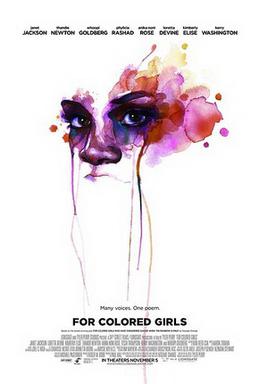
For Colored Girls is a 2010 American drama film adapted from Ntozake Shange's 1975 original choreopoem for colored girls who have considered suicide / when the rainbow is enuf. Written, directed and produced by Tyler Perry, the film features an ensemble cast which includes Janet Jackson, Whoopi Goldberg, Phylicia Rashad, Thandiwe Newton, Loretta Devine, Anika Noni Rose, Tessa Thompson, Kimberly Elise, Kerry Washington, and Macy Gray.
Jamara Mychelle Wakefield is an American spoken word poet, community organizer and writer, previously known by her stage name London Bridgez. She founded Neo.logic Beatnik Assembly, an idea shop and creative arts production company, and organized the TEDxRoxburyWomen event featured on Basic Black, a TEDTalks event in Boston.

spell #7, or spell #7: geechee jibara quik magic trance manual for technologically stressed third world people, is a choreopoem written for the stage by Ntozake Shange and first performed in 1979.

nappy edges is a collection of poetry and prose poetry written by Ntozake Shange and first published by St. Martin's Press in 1978. The poems, which vary in voice and style, explore themes of love, racism, sexism, and loneliness. Shange's third book of poetry, nappy edges, was met with positive reviews and praise from critics, like Holly Prado of the Los Angeles Times who said of it that "this collection of poems, prose poems and poetic essays merges personal passion and heightened language."

Dianne McIntyre is an American dancer, choreographer, and teacher. Her notable works include Their Eyes Were Watching God: A Dance Adventure in Southern Blues , an adaptation of Zora Neal Hurston's novel Their Eyes Were Watching God, as well as productions of why i had to dance,spell #7, and for colored girls who have considered suicide when the rainbow is enuf, with text by Ntozake Shange. She has won numerous honors for her work including an Emmy nomination, three Bessie Awards, and a Helen Hayes Award. She is a member of the Stage Directors and Choreographers Society, the American Society of Composers, Authors and Publishers, and the Dramatists Guild of America.
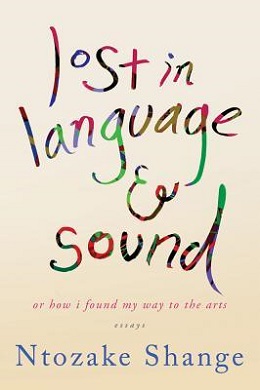
lost in language & sound: or how i found my way to the arts: essays (2011) is a collection of 25 personal essays written by Ntozake Shange. Explored in the collection are topics such as racism, sexism, jazz, dance, and writing. The essays function as autobiography, music and literary criticism, and social critique. While some pieces were written specifically for the collection, many were written over the span of over 30 years.
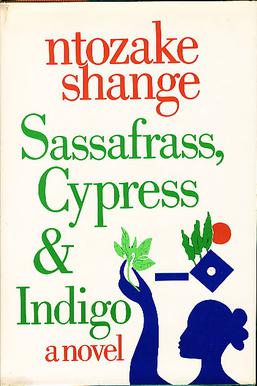
Sassafrass, Cypress & Indigo is a 1982 novel written by Ntozake Shange and first published by St. Martin's Press. The novel, which took eight years to complete, is a story of three Black sisters, whose names give the book its title, and their mother. The family is based in Charleston, South Carolina, and their trade is to spin, weave, and dye cloth; unsurprisingly, this tactile creativity informs the lives of the main characters as well as the style of the writing. Sassafrass, Cypress & Indigo integrates the whole of an earlier work by Shange called simply Sassafrass, published in 1977 by Shameless Hussy Press. As is common in Shange's work, the narrative is peppered with interludes that come in the form of letters, recipes, dream stories and journal entries, which provide a more intimate approach to each woman's journey toward self-realization and fulfillment. The book deals with several major themes, including Gullah/Geechee culture, women in the arts, the Black Arts Movement, and spirituality, among many others.
Judy Dearing was an American costume designer, dancer, and choreographer. She is most well known for designing costumes for a wide range of theater and musical productions, including Charles Fuller's Pulitzer Prize winning drama "A Soldier's Play" and the 1976 stage adaptation of Ntozake Shange's book, for colored girls who have considered suicide / when the rainbow is enuf.

Laurie Dorothea Carlos was an American actress and avant-garde performance artist, playwright and theater director. She was also known for her work mentoring emerging artists in the theater.
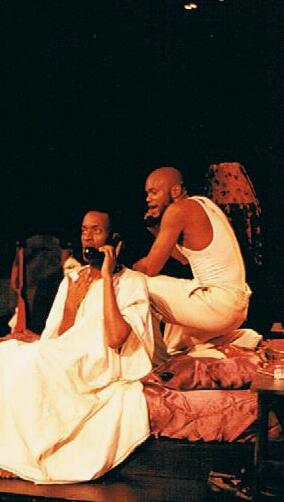
The New Federal Theatre is a theatre company named after the African-American branch of the Federal Theatre Project, which was created in the United States during the Great Depression to provide resources for theatre and other artistic programs. The company has operated out of a few different locations on Henry Street in the Lower East Side of Manhattan. Since 1970 The New Federal Theatre has provided its community with a stage and collection of talented performers to express the voices of numerous African-America playwrights. New Federal Theatre boasts nationally known playwrights such as Ron Milner (Checkmates), Ed Bullins, and Ntozake Shange as well as actors including Jackée Harry, Morgan Freeman, Denzel Washington, Debbie Allen, Phylicia Rashad, Dick Anthony Williams, Glynn Turman, Taurean Blacque, Samuel L. Jackson, and Laurence Fishburne.
Yvette Hawkins was an American actress on Broadway, on television, and in films.

Margaret Rose Vendryes was a visual artist, curator, and art historian based in New York.
Aku Kadogo, born Karen Vest, is a choreographer, director, actress, and educator. She was one of the original cast members of Ntozake Shange's For Colored Girls Who Have Considered Suicide / When the Rainbow Is Enuf (1976), and acted in the 1990s Australian children's television series Lift Off. She has educated and performed in Australia, Senegal, Cuba, Brazil, and Hong Kong, and South Korea.
References
- ↑ "To start with a word and end with a gesture" . Retrieved October 18, 2020.
- ↑ Rawson, Christopher (March 7, 2008). ""Layla" is Forceful "Choreopoem"". ProQuest. ProQuest 390693272.
- ↑ Cox-Cordova, Jill (July 21, 2009). "Shange's 'For Colored Girls' has lasting power". CNN. Archived from the original on November 29, 2010. Retrieved October 18, 2011.
- ↑ rorydean (February 22, 2011). "For Colored Girls (2010)". Above the Line. Retrieved October 11, 2011.
- ↑ Waxman, Barbara (Autumn 1994). "Dancing out of Form, Dancing into Self: Genre and Metaphor in Marshall, Shange, and Walker". MELUS. 19 (3): 91–106. doi:10.2307/467874. JSTOR 467874.
- ↑ "Shange, Ntozake". literati. Retrieved May 7, 2014.
- ↑ "The XX Chromosome Genome Project by S. Ann Johnson". 2 Pens & Lint LLC. Archived from the original on May 12, 2014. Retrieved May 6, 2014.
- ↑ Matema, ZSun-Nee. "'XX Chromosome Genome Project' at Hamilton Arts Center". DC Metro Theater Arts. Retrieved May 7, 2014.
- ↑ Episode #186 Monica Prince on Choreopoems and Her Journey to Poetry , retrieved 2022-03-21
- ↑ admin (2020-03-26). "How to Exterminate the Black Woman (a Choreopoem) by Monica Prince". [PANK]. Retrieved 2022-03-21.
- ↑ "Monica Prince". www.susqu.edu. Retrieved 2022-03-21.
- ↑ Morris Johnson, Nicole M. (2018). "Ntozake Shange and the Choreopoem". The Routledge Companion to African American Theatre and Performance: 333–336.
- ↑ "Feminist Art Movement". The Art Story Foundation. Retrieved May 11, 2014.
- ↑ Morris Johnson, Nicole, M (2017). "Ntozake Shange and the Choreopoem". The Routledge Companion to African American Theatre and Performance: 333–336.
{{cite journal}}: CS1 maint: multiple names: authors list (link) - ↑ Brooks, Kara (February 10, 2012). "Ntozake Shange on Why She Had to Dance". The Oberlin Review. Retrieved May 11, 2014.
- ↑ Collins, Lisa (2006). "Activists Who Yearn for Art That Transforms: Parallels in the Black Arts and Feminist Art Movements in the United States". Signs: Journal of Women in Culture and Society. 31 (3): 717–752. doi:10.1086/498991.
- ↑ Effiong, Philip. "Ntozake Shange's Choreopoem: Reinventing a Heritage of Poetry and Dance" (PDF). Archived from the original (PDF) on May 12, 2014. Retrieved May 11, 2014.
- ↑ Morris Johnson, Nicole M. (2018). "Ntozake Shange and the Choreopoem". The Routledge Companion to African American Theatre and Performance.
- ↑ Prince, Monica. "Monica Prince Choreopoems Scholar". Monica Prince. Retrieved 2022-02-27.
- ↑ "SFWP". Santa Fe Writers Project. Retrieved 2022-03-21.
- ↑ Riddick, Sharon (March 12, 1986). "Choreopoem production teachers black history". ProQuest: 13. ProQuest 569411136.
- ↑ "Dancer From 'The Wiz' Joins Cast Of Singin' & Shoutin'". ProQuest. ProQuest 184480702.
- ↑ Temin, Christine (October 30, 1980). "The total theater approach: REVIEW DANCE". ProQuest: 45. ProQuest 1009981415.
- ↑ Matema, ZSun-nee. "'XX Chromosome Genome Project' at Hamilton Arts Center". DC Metro Theater Arts. Retrieved May 11, 2014.
- ↑ "Musical production at Hampton University". ProQuest: 12. March 13, 1985. ProQuest 569402585.